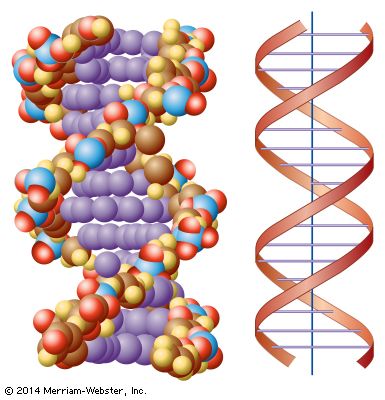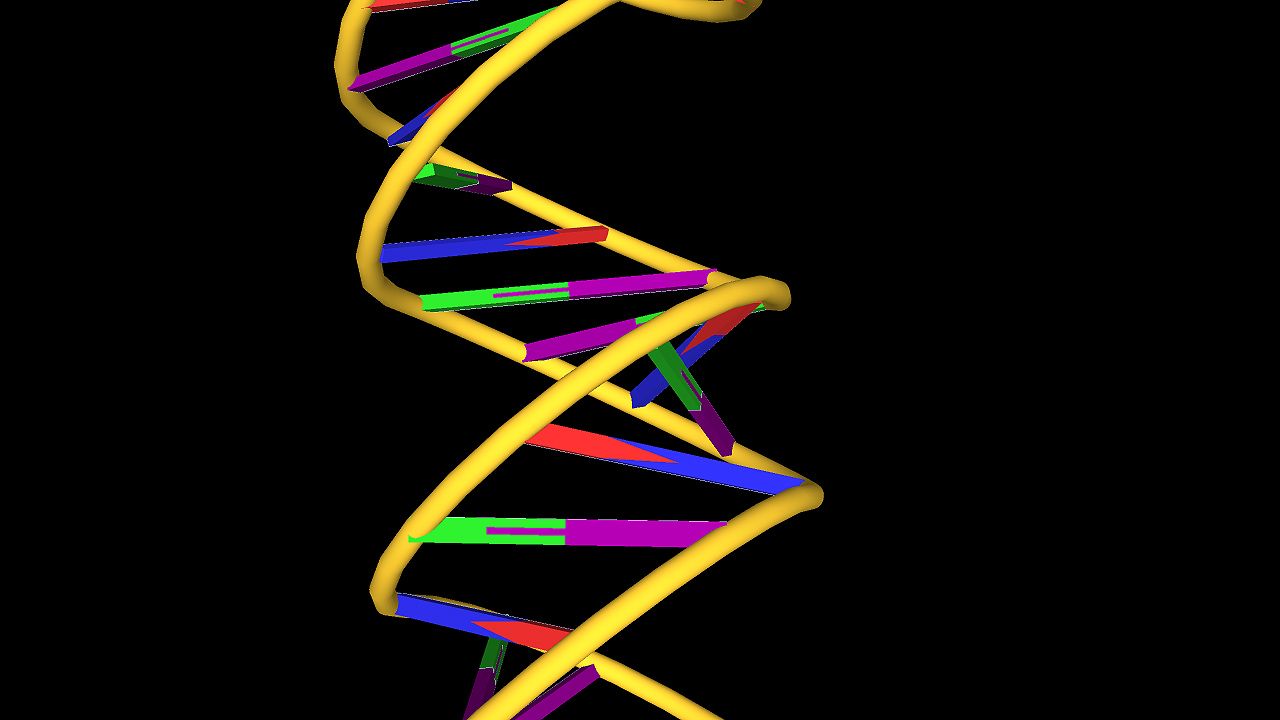
 DNA is the material that carries all the information about how a living thing will look and function. For instance, DNA in humans determines such things as what color the eyes are and how the lungs work. Each piece of information is carried on a different section of the DNA. These sections are called genes.
DNA is the material that carries all the information about how a living thing will look and function. For instance, DNA in humans determines such things as what color the eyes are and how the lungs work. Each piece of information is carried on a different section of the DNA. These sections are called genes.
DNA is short for deoxyribonucleic acid. It is in every cell of every living thing. DNA is found in structures of the cell called chromosomes. Both DNA and chromosomes are tiny. Scientists need to use very powerful microscopes to see them.
When DNA works correctly, it helps keep the body functioning properly. DNA helps cells to make the substances called proteins, which the cells need to live. DNA also allows living things to reproduce. The genes in DNA pass along physical traits from parents to children.
Sometimes there are mistakes in DNA. These mistakes are called mutations. They can cause diseases and other problems.
DNA has a complex structure. It is made of chemical substances that are linked together like a chain. Each piece of DNA has two long strands, or chains. The two strands are joined together. They form a shape like a ladder that has been twisted into a spiral.
Chemicals called phosphates and sugars make up the sides of the ladder. DNA also has chemicals called bases. Each base on one strand is joined to a base on the other strand. The linked bases form the rungs of the ladder.
There are four different bases in DNA: adenine, thymine, guanine, and cytosine. These four chemicals are repeated in different orders over and over again in each strand of DNA. Human DNA contains about 3 billion pairs of these bases.
The order in which the bases are arranged is very important. It forms a code that tells cells to make certain kinds of proteins. The differences in these proteins is what makes different living things—such as a cactus, a gerbil, and two different people—different.




